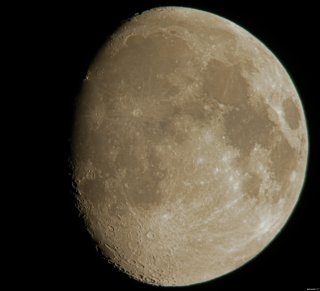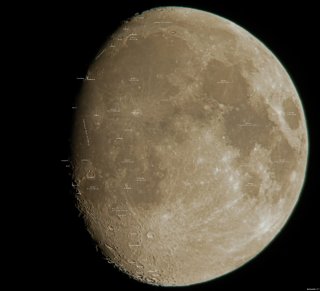Tonight another crater in the Mare Humorum comes into view: Mersenius. This crater, when observed under high power, can be seen to have an uplifted floor. Unlike most craters of its size, there are no central peaks; this can only be explained by lavas flowing inside the crater and building up until the peak was completely covered.
Another feature of the 11th day moon is the pair of craters Herodotus and Aristarchus in the northern Oceanus Procellarum. Aristarchus is such a bright crater that, according to Rükl, it can be seen on the night side of the moon in earthshine! At 40 km wide, it’s not a giant, but it is the brightest large crater on the moon, and it is located in the center of the intriguing region known as the Aristarchus Valley, about which more later. Tonight, the pair of Aristarchus and Herodotus (just west of Aristarchus) put on a very nice show right along the dividing line between night and day on the moon. As the moon gets older, the ray system from Aristarchus can be seen spreading out to the south and east for almost 150 km, overlapping with those from Copernicus and Kepler, brightening up the largest dark feature on the moon, the Oceanus Procellarum (the Ocean of Storms—if it helps you remember, think of the storm-petrels in the Procellariformes. I said, if it helps…)
Have a look for yourself:
And, as always, the map:




2 thoughts on “January moon, Day 11”